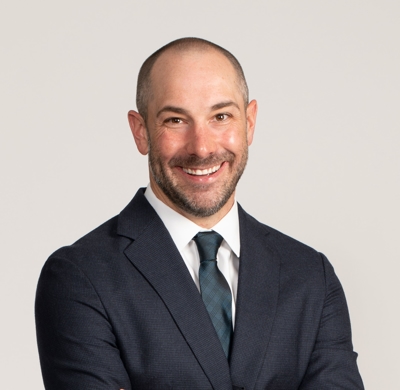Justin Richardson, MD, on minimally invasive surgery for chronic heartburn
- Category: General, Surgery, Gastroenterology
- Posted On:
- Written By: Boulder Community Health

Most of us experience occasional heartburn. However, more than 15 million Americans experience more intense heartburn. They suffer from gastroesophageal reflux disease (GERD) or chronic heartburn.
“When GERD is left untreated, it can lead to serious health issues, including a chronic cough, asthma, even esophageal cancer,” said board-certified general surgeon Justin Richardson, M.D., of Boulder Valley Surgical Associates during a free online lecture.
“Often GERD can be controlled with medication. If not, minimally invasive surgery can provide relief,” he added.
Video: Watch Advanced Treatment for Chronic Heartburn
What is GERD?
GERD occurs when contents from your stomach move up into your esophagus.
 “There is a circular muscle, called the lower esophageal sphincter or LES, that separates the stomach and esophagus,” said Dr. Richardson. “With GERD, this muscle isn’t as strong as it should be, and doesn’t close properly. This causes some of the acidic mixture from the stomach to go back up the esophagus.”
“There is a circular muscle, called the lower esophageal sphincter or LES, that separates the stomach and esophagus,” said Dr. Richardson. “With GERD, this muscle isn’t as strong as it should be, and doesn’t close properly. This causes some of the acidic mixture from the stomach to go back up the esophagus.”
Hiatal hernia can also play a role in the development of GERD. Dr. Richardson explained, “A hiatal hernia is a condition in which a small part of your stomach bulges through a hole in your diaphragm. This also forces the LES into the chest where it no longer functions normally, allowing reflux to occur.”
Complications that are associated with GERD include:
- Esophagitis—an inflammation that may damage the esophagus lining
- Esophageal stricture—an abnormal narrowing of a portion of the esophagus
- Barrett’s esophagus—a change in the lining of the esophagus that increases your risk for esophageal cancer
Risk factors for GERD
Those who are at a higher risk for GERD include:
- Those with increased abdominal pressure such as an increased body mass index (BMI), being overweight or even pregnancy
- Tobacco smokers
- Older patients
- First world communities—25% of people in the U.S. experience GERD, while only 10% of third world populations will experience GERD
- Those who are genetically predisposed
Symptoms of GERD
The most common symptoms of GERD are heartburn (acid indigestion), regurgitation and chest pain.
Dr. Richardson stated GERD patients may also experience:
- Hoarseness
- Wheezing
- Lingering cough
- Asthma
- Painful swallowing
- Laryngitis
- Dental erosions (from chronic acid exposure)
- Belching/bloating
- Nausea
“Symptoms are worse at night or when you lie down,” he stated.
Non-surgical Treatment of GERD
Your doctor may recommend that you first try lifestyle modifications such as avoiding foods and beverages triggers that can relax the LES, including chocolate, peppermint, fatty foods and caffeine. If you don't experience relief within a few weeks, your doctor might recommend prescription medication.
“While older H2 blockers are available over the counter, more highly effective proton pump inhibitors, or PPIs, are the standard of care and mainstay for GERD treatment.” said Dr. Richardson.
Dr. Richardson emphasized, “However, PPIs can be overused. They should be prescribed for four-to-eight weeks only and are not intended to be used indefinitely. Some PPIs are even available over the counter which further increase risk of misuse.”
He said concerns associated with long-term PPI use include:
- Chronic and acute kidney disease
- Clostridium difficile, a colon bacterium
- Increased risk for pneumonia associated with changing the character of reflux
- Osteoporosis and fractures may result from altering the stomach’s acidity as this change effects calcium and magnesium absorption
- Slight increase risk gastric cancer—though still rare
Surgery for GERD
GERD can usually be controlled with medication. But if medications don't help or you wish to avoid long-term medication use, your doctor might recommend fundoplication surgery.
During this surgery, the surgeon wraps the top of your stomach around the LES to tighten the muscle and prevent reflux. The wrapping of the top part of the stomach can be partial or complete.
“We create effectively what's a one-way valve allowing stomach contents to go down but not back up,” he explains.
This procedure can often be done laparoscopically with robotic-assisted surgery—a leading-edge technology that provides enhanced precision, vision, dexterity, and control. It is minimally invasive, features 3D HD vision, and tiny-wristed instruments that bend and rotate far greater than the human wrist. The benefits of robotic-assisted surgery include:
- Less post-operative pain
- Decreased hospital stays
- Reduced trauma and formation of scar tissue
- Less blood lost
- Quicker recovery and return to normal activities
Click here to view/download slides shown during the lecture on “Advanced Treatment for Chronic Heartburn.”
Please call 303-415-4599 to schedule an appointment with Justin Richardson M.D.